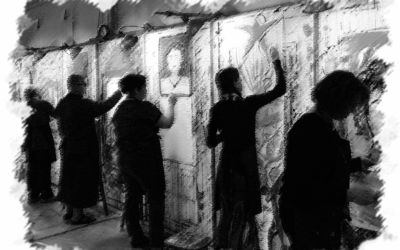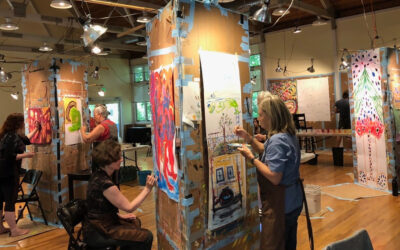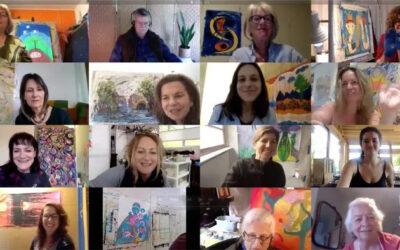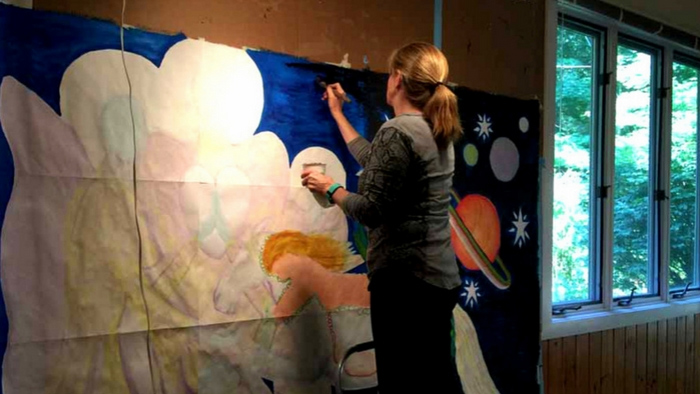
“Our fate restricts us so that our destiny can find us . . .” ~ Michael Meade, Fate and Destiny, The Two Agreements of the Soul
One of the insights that comes from process painting is the inevitability of what we perceive as our limitations. Behind every brushstroke lurks the insistent voice that we are lacking something: I’m not trained enough, I don’t have the skill to execute what I want to paint. I don’t have a rich enough imagination. The list of our shortcomings goes on and on; over time it builds up a habit of resistance to anything new and a reflex of feeling threatened by the attempt.
Why is this? Shouldn’t we be over our judgmental voices by now? After so many years of working on ourselves in meditation and painting and in all our practices, shouldn’t we have moved beyond this disparaging litany? Or is there perhaps a larger picture, a more inclusive way of holding what we have to admit is a persistent part of our experience?
Recently, I was alerted to an article that offers a different perspective on this struggle, as well as a new language for exploring the creative process. As I was reading the article, I felt an immediate translation to my own experience as a process painter and facilitator. The threat imposed by the transformative potential of the unconscious and the distinction between “ego images” and “non-ego images” are so much a part of the journey we know so well.
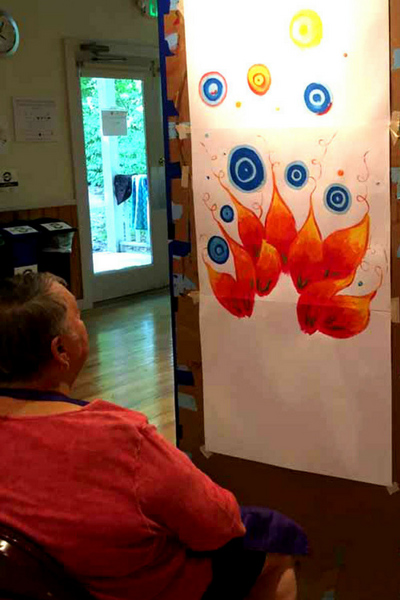
Below are some excerpts from the article that you may find useful. To read the entire article, see Imaginology: The Jungian Study of the Imagination, by Jungian analyst Michael Vannoy Adams.
We defend ourselves against ourselves
What Jung means when he says that “we defend ourselves against ourselves” is that the anxious ego neurotically defends itself against the unconscious. I prefer to say, instead, that the anxious ego-image neurotically defends itself against non-ego images.
It is not the unconscious that is unconscious
Ironically, it is not the unconscious that is unconscious. Rather, it is the ego-image that is unconscious, and what it is unconscious of are non-ego images. To the extent that the ego-image is unconscious of non-ego images, it tends to react anxiously and defensively because it regards them as dangerous.
The function of non-ego images is transformative
The function of non-ego images is transformative. Non-ego images are what I call “images of transformation.” They attempt to contact and impact the ego-image in an effort to transform it. The ego-image, however, regards non-ego images as dangerous precisely because they are transformative.
Curiosity, in contrast to anxiety, is not a technical term
“Curiosity,” in contrast to “anxiety,” is not a technical term in psychoanalysis . . . . I would say that curiosity is an urge to know the unknown — and, more specifically, what I might call the “imaginal unknown” — the non-ego images of which the ego-image is unconscious.
Seldom does the ego-image approach non-ego images
Seldom does the ego-image approach non-ego images. Most frequently it is non-ego images that approach the ego-image, that attempt to contact and impact the ego-image in an effort to transform it. Rather than approach non-ego images, all too often the ego-image avoids them, or, when non-ego images approach it, attacks them in an effort to protect the ego-image. The ego-image employs the familiar, famous defenses of “flight” or “fight.”
Psychoanalysts — among them, Jungian psychoanalysts — routinely kill images
Psychoanalysts — among them, Jungian psychoanalysts — routinely kill images. Hillman says that this killing occurs by interpreting images — that is, by deriving them from and reducing them to concepts.
Interpretation need not kill the image
Interpretation need not kill the image with a concept. Rather than replace the image with a concept, it may respect the image and, by meticulous attention to the distinctive qualities of the image, render explicit the essence that is implicit in the image.
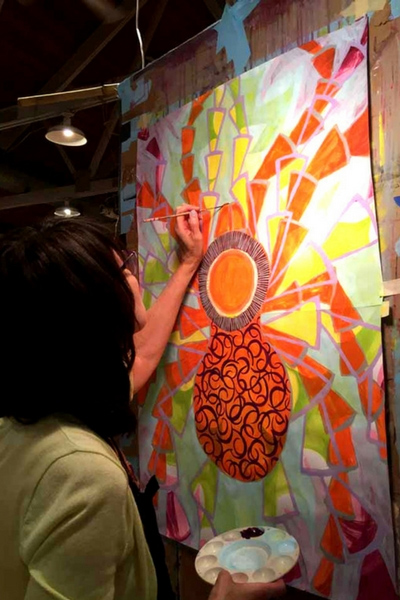
These quotes lend themselves so well to the experience of painting for process. I hope they whet your appetite for reading more.
More Information
Thank you to Chris Van Steenbergen for alerting us to Adams’s article.
For a related discussion, see Stewart’s most recent podcast, Critical Voices.
To learn about upcoming opportunities to explore process painting, see our Programs page.

